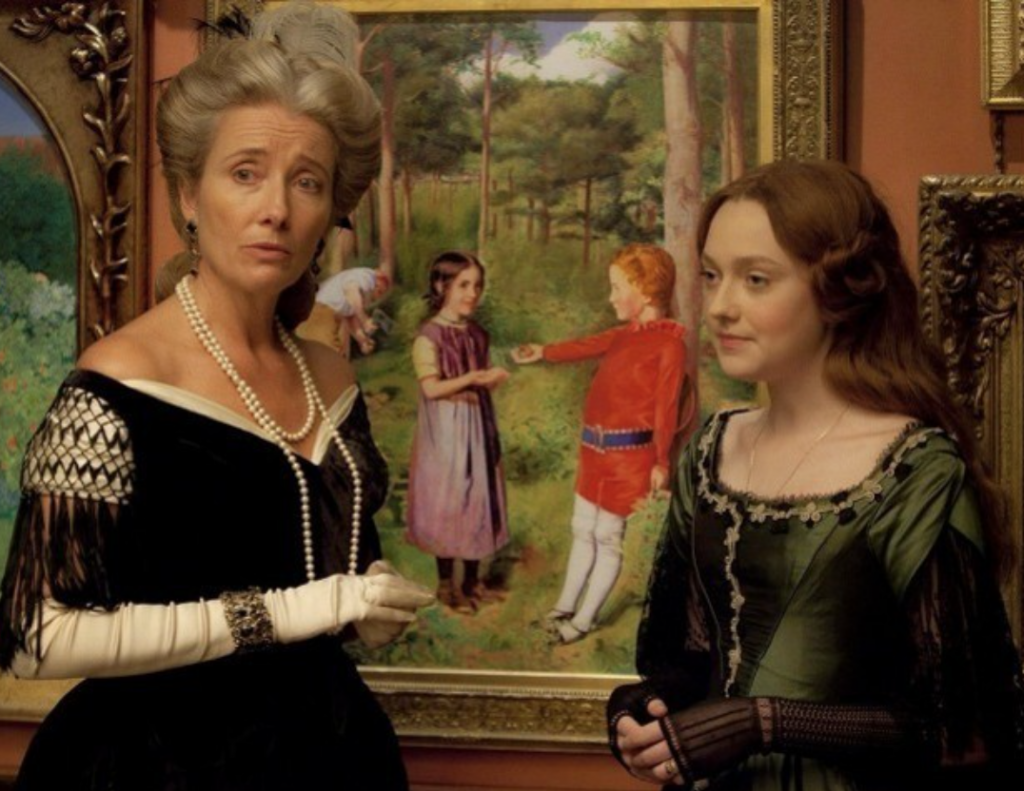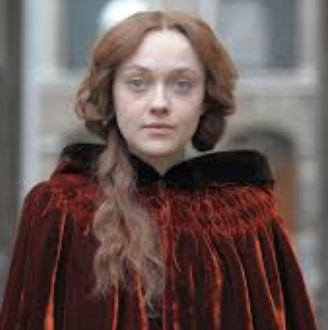 “Effie Gray,” about the young wife of premier Victorian art critic John Ruskin, is an unlikely disappointment. Set against the unfettered backdrop of eighteenth-century Scotland, England, and Venice, it is written by Emma Thompson, who has a proven track record of penning slyly feminist screenplays (“Wit,” “Sense and Sensibility”), and it boasts all the ingredients of a female-empowering bodice-ripper: stifling family dysfunction, sexual liberation, a lurid love triangle. Yet this too-delicate biopic never develops the spine nor sparkle for which its titular character is celebrated.
“Effie Gray,” about the young wife of premier Victorian art critic John Ruskin, is an unlikely disappointment. Set against the unfettered backdrop of eighteenth-century Scotland, England, and Venice, it is written by Emma Thompson, who has a proven track record of penning slyly feminist screenplays (“Wit,” “Sense and Sensibility”), and it boasts all the ingredients of a female-empowering bodice-ripper: stifling family dysfunction, sexual liberation, a lurid love triangle. Yet this too-delicate biopic never develops the spine nor sparkle for which its titular character is celebrated.
A woefully miscast Dakota Fanning doesn’t help. Decked out in bosom-baring gowns, a mane of auburn waves, and a faint approximation of a British accent, she plays Euphemia “Effie” Gray, a Scottish lass of modest means who was raised in the house where Ruskin’s grandfather committed suicide. John (Greg Wise, as dour here as the real-life Ruskin appears in portraits) was so besotted that he wrote the novel The King of the Golden River for her when she was twelve years old. Yet when they wed eight years later, their marriage was never consummated for reasons that are still debated today.
This film doesn’t venture a definitive hypothesis, nor does it give us the space to draw conclusions of our own. We see Effie strip on their wedding night; we see John blanch and beat a hasty, essentially permanent retreat. Could his repulsion have stemmed from a general dislike of adult women? An inability to grapple with, as has been conjectured, female pubic hair and menstrual blood? (If so, he’d certainly be in good company in the twenty-first century.) John’s pathological over-involvement with his territorial mother, Margaret (a wickedly curt Julie Walters), might’ve been a cock block. Her disapproval of John and Effie’s union is depicted as so pronounced that she doesn’t invite the girl to meals though the couple dwells in her grand estate. Theirs is a dreary food chain of infantilization: Effie is completely subject to John, who in turn dangles willingly from his mother’s apron strings.
 Soon enough, Effie grows so miserable that she falls prey to the kinds of ailments – fevers, hair loss, fatigue – that plague women who lack healthier outlets for their woes. She is cured by a trip to the countryside, or, rather, by the soulfully hunky painter John Everett Millais (Tom Sturridge), her husband’s protégé who accompanies them on their sojourn. (Oh, well.) The rest is a matter of public record though it takes place largely offscreen: on the grounds of Ruskin’s impotency, Effie petitions for an annulment that’s granted in a landmark legal case, and she enjoys a far-happier second marriage to Millais, with whom she remains for the rest of her life.
Soon enough, Effie grows so miserable that she falls prey to the kinds of ailments – fevers, hair loss, fatigue – that plague women who lack healthier outlets for their woes. She is cured by a trip to the countryside, or, rather, by the soulfully hunky painter John Everett Millais (Tom Sturridge), her husband’s protégé who accompanies them on their sojourn. (Oh, well.) The rest is a matter of public record though it takes place largely offscreen: on the grounds of Ruskin’s impotency, Effie petitions for an annulment that’s granted in a landmark legal case, and she enjoys a far-happier second marriage to Millais, with whom she remains for the rest of her life.
More moldy than maudlin, this isn’t exactly a conventional biopic. We’re not subjected to a juicy courtroom drama (which might have shed more light on Ruskin’s disengagement), nor any steamy lovemaking scenes. Instead, cinematographer Andrew Dunn’s shots of verdant, rolling hills and languid close-ups of oil-painted nudes mock us with an unfulfilled erotic promise that approximates poor Effie’s torture. If only more of this film borrowed on her perspective. With chilly vagaries, a staid parlor-room portraiture reinforces Ruskin’s brutal prudishness. Scenes with Thompson, as Gray’s concerned mentor Lady Eastlake, impart a lively candor that is otherwise in scant evidence.
I’d mock Thompson for giving herself the film’s best lines but reports suggest she was thwarted by two plagiarism lawsuits from authors who had previously dramatized the same material. Though unsuccessful, they may explain the long shadow cast by the film’s uncovered ground.  That’s not the only issue at hand here, though. Director Richard Laxton, known for such soapy British TV fare as “Burton and Taylor,” doesn’t seem capable of the nuance required for such a charged story. And, of course, there’s Fanning herself, who, as a child actress, was so successful at miming adult behavior that she may not realize different skills are required now that she’s an adult.
That’s not the only issue at hand here, though. Director Richard Laxton, known for such soapy British TV fare as “Burton and Taylor,” doesn’t seem capable of the nuance required for such a charged story. And, of course, there’s Fanning herself, who, as a child actress, was so successful at miming adult behavior that she may not realize different skills are required now that she’s an adult.
The real Effie was reportedly a strapping, outspoken lass who turned heads wherever she went but Fanning’s incarnation is far more self-conscious (the curse of all former child actors). With affectless speech, frozen features, and a trudging gait – those Fanning girls are oddly ungraceful – she seems legitimately put-upon, but it’s hard to imagine that this monochromatic victim possesses the necessary seed for rebellion. Everything about this potentially vibrant period drama is a washed-out watercolor, actually. In only the most dismal of ways, it’s Fifty Shades of Gray.
This was originally published in Word and Film.
